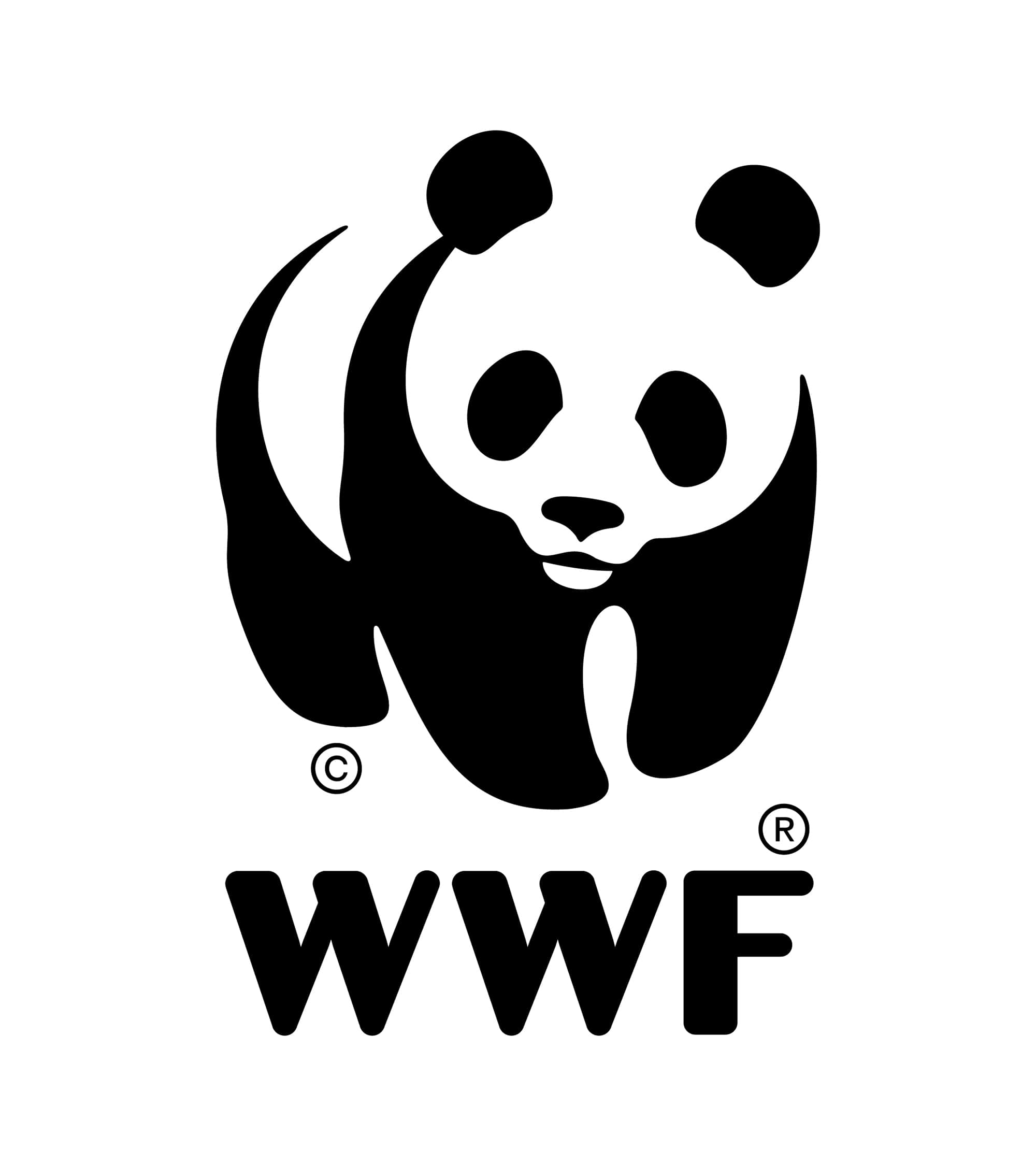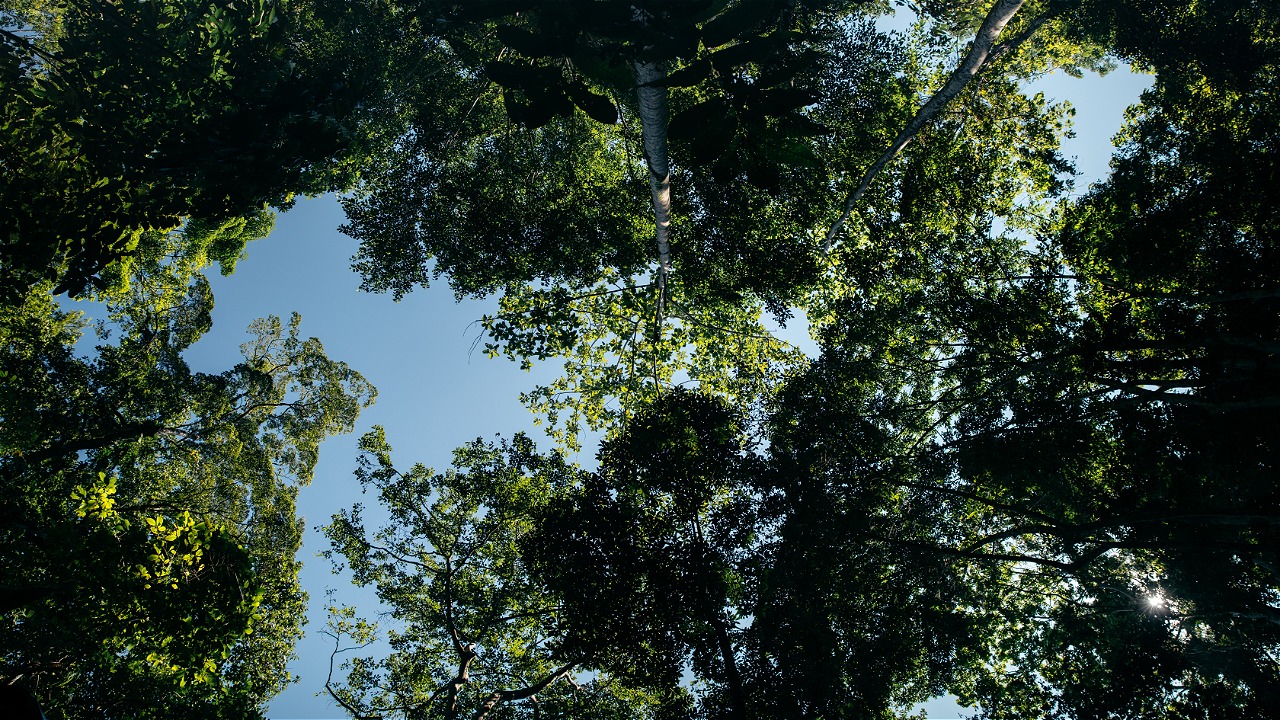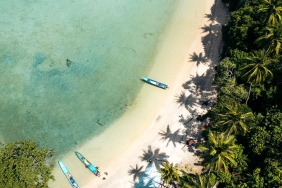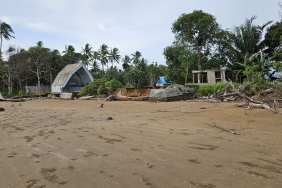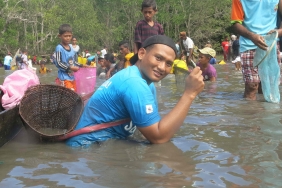COMPARATIVE STUDY OF JIBOGOL AND MOMA COOPERATIVES TO UNAF IN KB. GUNUNG KIDUL IN 2011
Forest management is returned to the indigenous people, thus the new policy of the Papua Provincial government in the implementation of forest management that will be carried out by the community and will refer to Governor Regulation No. 13 of 2010. As a form of effort and support for the government's policy, WWF Indonesia Sahul Region has provided assistance to indigenous forest management groups Jibogol Multipurpose Cooperative (KSU) Guriat Village Unurum Guay District Jayapura Regency and Multipurpose Cooperative (KSU) Mo Make Unaf Kaliki Village Kurik District Merauke Regency, has facilitated the two groups to conduct a comparative study to HKM / HTR located in Gunung Kidul Regency Special Region of Yogyakarta. The following is the report
God Almighty has given the gift of forest resources (with all the benefits therein) in Papua Province so that it must be utilized wisely for the welfare of mankind, both for present and future generations,
In recent years, forest management in Papua Province has not improved the welfare of the Papuan people, especially the indigenous Papuan people, and has not been able to strengthen the fiscal capacity of the government in Papua Province. However, since the enactment of Law of the Republic of Indonesia Number 21 of 2001 concerning special autonomy for the Province of Papua, the state and people of Indonesia have recognized the respect and appreciation of the rights of indigenous Papuans to natural resources, including forest resources. Based on this, forest management in Papua Province must be carried out with partiality, protection and empowerment of Papuan indigenous peoples in order to achieve prosperity and independence within the Unitary State of the Republic of Indonesia.
Forest management in Papua Province is carried out through equal and fair partnership cooperation, while taking into account the principles of environmental sustainability, justice, equity and respect for human rights,
To realize the empowerment of customary law communities in forest management within their customary forest areas, the Government of Papua issued Special Regional Regulation (Perdasus) No. 21 of 2008 concerning sustainable forest management in Papua. In the Perdasus, customary law communities are given the right to legally manage their customary forest potential (timber and non-timber). This means that customary law communities are given the opportunity to administer and own forest management licenses, along with all the obligations that must be fulfilled and all the rights that can be obtained. The ultimate goal is that the community can feel the optimal economic benefits legally and responsibly from this management.
Following up on Perdasus No. 21/2008, the Papua Provincial Government then issued Papua Governor Regulation (PerGub) No. 13/2010 concerning permits for utilization of timber forest products by customary law communities. The PerGub explains the mechanism for obtaining utilization permits by customary law communities, the rights and obligations of permit holders, capital, timber administration and marketing mechanisms. Even technically, the Head of the Papua Forestry and Conservation Service has issued technical guidelines for the utilization of timber forest products, making it easier for customary law communities to meet the bureaucratic procedures in managing their customary forests.
Comparative study activities to KWML Gunung Kidul Yogyakarta is one of the programs of WWF Indonesia to facilitate indigenous forest management KSU Jibogol Guryat Village Unurum Guay District and KSU Mo Make Unaf Kaliki Village Kurik District Merauke Regency. The comparative study was held from January 26, 2011, the comparative study team from Merauke Regency and Jayapura Regency went to Jogyakarta until January 30, 2011, the team returned to their respective regions.
The team of participants from Merauke Regency amounted to 5 participants, namely Mr. Agustinus Balagaize, Mr. Nahasan Balagaize and Anthon Balagaise from the KSU Mo Make Unaf Group, accompanied by Mr. Protasius Kaime from the Merauke Regency Forestry Service and Mr. Prasetyo from WWF Merauke, while participants from Jayapura Regency consisted of Mr. Hendrik Kulang, Enos Kulang and Yosep Birawa from KSU Jibogol Kampung Guriat and were accompanied by Mr. Estiko Tri Wiradyo from the Papua Provincial Forestry and Conservation Service, Mr. Rudy J. Sokoy from the Jayapura Regency Forestry Service, Mr. Piter Roki Aloisius and Agustinus Wianimo from WWF Indonesia Sahul Region. Arriving in Jogya, the comparative study team from Papua was joined by Nicole and Tanya who are Masters students from Australia who are interning at WWF Indonesia, Christine is a buyer from France working and headquartered in Singapore who wants to see firsthand the practice of sustainable forest management that has been carried out as well as aiming to get a market share for raw material sources for their industrial companies that produce furniture and handcraf with the provision of raw material sources must come from forest management carried out by the community and managed sustainably.
The aims and objectives of the comparative study together with the community and representatives from the government, namely the Merauke Regency Forestry Service, the Jayapura Regency Forestry Service and the Papua Provincial Forestry and Conservation Service to HKM / HTR in Gunung Kidul are
a. To gain experience and knowledge about the cooperative management organization that has been carried out in the Wana Manunggal Lestari Cooperative (KWML)
b. To gain experience and knowledge of how forest management systems are developed by forest-owning communities so as to obtain optimal benefits.
c. To gain experience and knowledge of how the implementation of legal aspects of forest management (positive state law) in the implementation of community forest management in the Wana Manunggal Lestari Cooperative (KWML)
d. To gain experience and knowledge about marketing of crops and post-harvest processing.
e. To gain knowledge and experience in implementing forest management towards credible forest management certification.
A. Visit to the Forestry and Plantation Service of Gunung Kidul Regency
The visit to the Forestry and Plantation Service of Gunung Kidul Regency was carried out on the first day of January 26, 2010, in addition to aiming for friendship and also to obtain information related to programs and policies in the forestry sector implemented in the Regency. The meeting was conducted in the form of face-to-face meetings and questions and answers, in which the Head of Service was accompanied by several officials within the scope of the Forestry and Plantation Service of Gunung Kidul Regency.
In his remarks, the Head of the Forestry Service welcomed and gave appreciation for determining Gunung Kidul Regency as a place for the implementation of comparative studies from indigenous Papuans facilitated by WWF Indonesia. Furthermore, the Head of Service conveyed an overview related to forestry sector programs and policies, implementing various programs aimed at improving the economy of many people, one of which is the community empowerment program facing critical land, the program will be spread to 14 sub-districts from 18 sub-districts in Gunung Kidul.
The area of Gunung Kidul Regency is 1,485.36 km2, the Gunung Kidul area is mostly critical land with a thin top soil layer, steep slopes, and undulating to hilly topography. Most of the critical land occurs because in the past the management of agricultural land was not appropriate so that it exceeded the carrying capacity of the land. The community makes efforts to rehabilitate their agricultural land by planting their land with woody plants. The planting of woody plants generally began in the early 1950s for land that was no longer suitable for planting agricultural crops, carried out individually (individual) and not yet together (mass).
People think that with the presence of woody plants on their land, the quality of the land can be improved while they get several benefits, both economic and ecological benefits. The activity of planting woody plants on the property was carried out simultaneously in mass in reforestation activities together with reforestation field officers (PLP) in the Bangun Desa Project in 1984 to 1985. The reforestation was carried out by planting critical areas prone to erosion, in addition to increasing land productivity. The development of community forests began with terracing lands with steep slopes and planting these lands with woody plants that are beneficial to the community both economically and ecologically.
Some information presented by the Head of the Forestry and Plantation Service of Gunung Kidul Regency in connection with community forest management in Gunung Kidul Regency is; Forest area in Gunung Kidul is ± 34,000 ha (mostly forests managed by the community) with annual production reaching 100,000 m3. The average community land ownership in Gunung Kidul is only 0.5 ha/KK, with a planting system that changes the type of plant every season. In Gunung Kidul, community forests are managed by the Yogyakarta Regional Government (in this case the Forestry Service), not Perum Perhutani in general in Java. The total area of forest managed by the Gunung Kidul Forestry Service is 13,000 ha, with 9000 ha managed directly by the Forestry Service and 4000 ha managed by the community. In Gunung Kidul, there is a forestry working group that encourages the community to manage the forest sustainably. The NWG consists of universities, NGOs and related agencies. There is a Governor Regulation of Yogyakarta that regulates Community Forest Management (including revenue sharing). That is PerGUb No. 38 of 2009. The motivation for the community to manage the forest is to make it easier to find water in the dry season, where in the 60-70s Gunung Kidul was a poor, dry area, there is economic value obtained by farmers/communities because the timber market has been established. Bureaucratic affairs in the government (related agencies) are relatively easy to produce and sell felled wood products owned by the community.
B. Visit to Bleberan Village, Paliyan Hamlet Wonogiri
After meeting with the Head of the Forestry Service and his staff, the comparative study team continued their journey to Bleberan Village, Playen Hamlet Wonogiri.
Arriving at the location, the community was immediately invited to see the location of the community forest which had been planted with teak trees, after conducting a field visit followed by a meeting with members and management of the cooperative. In his acceptance speech, the head of the cooperative expressed his gratitude for the visit of the team from Papua who had determined their Hamlet to conduct Comparative Study activities, further conveyed that this community forest program could be successfully implemented because it was pressed by the condition of the area which was previously arid, the community was difficult to get water sources, for drinking needs and irrigation for plants, the land became dry and barren. Residents are grateful that with the community forest program launched by the government, the community is given the authority to manage state forests. The head of the cooperative advised indigenous peoples in Papua, do not let the forests in Papua become bare like in their area who have to struggle to reforest their arid land, it would be nice if the utilization of forests in Papua which are known to be virgin utilization and management is managed sustainably, ending with a message not to leave tears but to leave springs for our children and grandchildren.< br />
In Beleberan Village, the community forest management model, with the status of the state forest area managed by KTHKm Tani Manunggal, which has obtained permission from the Gunung Kidul Regent based on Decree No. 312/KPTS/2003 with an area of 40 hectares, for the management and utilization model, the area is divided into 97 households, which are members of the Tani Manunggal Cooperative.
The Community Forest Farmer Group (KTHKm) Tani Manunggal was not originally a HKm farmer group, but a farmer group whose inception was due to the fact that in 1980 in the Menggoran II hamlet there was a remaining budget for the construction of the Kedung Poh DAM which amounted to around Rp. 80,000, so that the project implementer took the initiative to establish a group to manage the funds, so the Manunggal Farmer Group was formed that year as well.
In addition to serious land management, the group also developed/enhanced the group's institutional capacity by seeking a cooperative legal entity which is a prerequisite for obtaining a definitive license. On October 11, 2004, the Tani Manunggal Community Forest Farmer Group (KTHKm) obtained a cooperative legal entity No. 518.011/BH/: 518.011/BH/IX/2004, since October 2004. Basically, this cooperative legal entity was obtained with the intention that KTHKm Tani Manunggal wanted to strive to further improve the welfare of its members. In addition, this legal entity cooperative is also a requirement to obtain a definitive license in the management of HKm.
In 2006 a number of groups in the Playen area merged in the Tani Manunggal cooperative to fulfill the provisions of the Hkm license, as in Decree 31 /kpts/2001 concerning HKm Management. The occurrence of the merger in addition to the reasons for the sustainability of HKm management is also to be able to further develop the cooperative, with a wider number of members and many cooperatives will be easier to develop. The groups that made the merger include:
Table of combined groups of Koptan Tani Manunggal
Name of group Address of management Members Area Hkm SK Temporary License Asset
Tani Manunggal Menggoran II-Bleberan-Playen Ngabdani Hartono Radimin 100 40.00 312/ KPTS/ 2003 Dec 8, 2003 208,000,000
Sedyo Rukun Gembol-Ketanggi-Banyusoco-Playen Pardiastuti Sugiyati Ismintarti 54 17.00 86/ KPTS/ 2004 June 23, 2004 16,580,000
Source Wanajati I Kepek-Banyusoco-Playen Poniyo Sugina Saena 49 12.65 67/ KPTS/ 2004 June 16, 2004 5,650,000
Source Wanajati III Kepek-Banyusoco-Playen Harjono Tumin Parso 20 15.00 81/ KPTS/ 2004 June 22, 2004 1,000,000
The organizational structure of the merger is as follows:
The main type of plant cultivated in the HKM area is teak trees with an intercropping system with underplanting of Porang (Amarphhopallus onchophyllus). Porang is a tuberous plant, the planting of which is facilitated by BPDAS Serayu Opak Progo. Porang plants will produce tubers that will be processed into flour as a mixture for making noodles. The flour produced will be exported to Japan as the ordering country. In 1 Ha of land planted porang plants will produce 1 to 2 tons of flour. Based on stories and information from the community from KSU Jibogol Kampung Guryat after seeing the plant confirmed that this type of Porang plant is also found almost throughout the forest area of the Guryat Village community, growing wild / not planted / cultivated by the community and the potential that exists is not yet known and utilized by the community.
Land cultivation is carried out in mutual cooperation, the division of managed land is arranged by deliberation, the community is given the authority to determine the area of cultivated land adjusted to their abilities. The results of land utilization from agricultural crops, 100% of the income is given to the community or cooperative members, while for teak harvesting the distribution of the results is carried out with reference to the Decree of the Governor of DIY with the following distribution; 60% for farmers, 30% for the DIY Regional Government and 10% for the Gunung Kidul Regional Government.
In addition to some of the programs mentioned above, the successful community forest development program in Bleberan Village of Tani Manunggal Cooperative is the support of assistance programs from related agencies/offices that are members of the Community Forest Development Working Group, related to agricultural and livestock cultivation activities accompanied by BPPT Kab. Gunung Kidul, freshwater fish cultivation program facilitated by the Fisheries Service, cooperative institution formation facilitated by the Cooperative Service.
The number of members in the Manunggal Farmer Cooperative has amounted to 240 members and has 4 farmer groups with the provisions that these farmer groups cannot form a cooperative.
C. Visit to Giri Sekar Village, Jeruken Hamlet
After seeing the management of community forests with the status of the area as a state forest, the trip continued to Giri Sekar Village in Juruken Hamlet, from Bleberan Village to Giri Sekar Village it took ± 1 hour drive. In Juruken Village, the comparative study team held meetings and discussions with the management and members of the Trubus Community Forest Farmer Group. Through meetings and discussions, the residents of Juruken Hamlet told that initially most of the land was critical land with a thin top soil layer, steep slopes, and undulating to hilly topography. Most of the critical land occurred because in the past the management of agricultural land was not appropriate so that it exceeded the carrying capacity of the land.
Through soil conservation activities by making terraces the land can again become fertile, the way to make a siring terrace is to arrange the stones that are often found on the land so that when it rains the soil will not be carried away by rainwater but will be retained by the siring terraces that have been made. By doing this soil conservation method, the residents of Jeruken Hamlet have land / soil media to plant plants from tree species and plantation crops with an intercropping system, from the sale of teak wood with a diameter of 10 cm and a length of 4 meters can be sold at a price of Rp. 17.000,-, the price of wood has increased continuously along with the certification of sustainable forest management, another benefit obtained is that Juruken Hamlet no longer has difficulty in clean water, new springs / springs are found, rivers that were once dry are now flowing to irrigate rice fields, plantation land and clean water needs for drinking bathing and toilet.
D. Visit to Giri Sekar Village Blimbing Hamlet
Not different from Jurukem Hamlet, the community in Blimbing Hamlet also practices soil and water conservation management. The land utilization carried out by the community is when the land owned has sufficient soil thickness for crop farming. Meanwhile, land in the form of rocky hills is planted with hard plants such as teak, mahogany, acacia etc. Although the planting of these perennials is mostly on sloping and rocky land, people also plant these perennials in their yards as a sign of land ownership boundaries. The agroforestry pattern is carried out to increase community income apart from the agricultural sector. With the sloping and hilly land/topography conditions, it is possible for erosion/washing of the soil above to the lands below during the rainy season. This has been realized by the community, who have built terraces on the land to prevent the soil from being washed away by water. The making of terraces is done individually or in mutual cooperation, this is because this area only has a very thin soil solum and is dominated by karst rocks in the form of hills. The practice of soil concavation with a terracing system to overcome hilly terrain that is poor in soil. The work is carried out in groups and mutual cooperation at the location of cooperative members.
In addition to land and water management practices, the Cooperative also carries out other economic activities, namely savings and loans and arisan members. These activities are carried out to help cooperative members who experience funding difficulties in developing their business. In the application of savings and loan practices, cooperative members must comply with the rules and regulations that have been determined together. The distribution of profits in the management of the cooperative has been agreed upon 60:40 (60% for farmers, 40% for the village/district).
In carrying out various activities, the community of Blimbing Hamlet is assisted by local NGOs so that the community can always discuss if there are problems. The community also built a water channel from the reservoir in the village forest area with the help of equipment from the NGO.
E. Visit to Kedung Keris Village
Arriving in Kedung Keris Village, the comparative study team visited the KTHR Association (Community Forest Farmers Group) of Nglipar Sub-district, Gunung Kidul Regency. The visit began with a meeting with the management and members of the KTHR. In the introductory remarks of the KTHR chairman, it was conveyed that Kedung Keris Village is one of the villages in Nglipar Subdistrict that has the potential for extensive community forests and state forests. However, the practice of forest management in Kedung Keris Village is that the forest that is managed is owned forest.
The development of community forests in Kedung Keris Village has been carried out by the local community around the 1950s. At that time, community access and interaction with forest products in the state forest area was very limited. Community interaction with the forest was very large, especially in fulfilling the need for wood tools, firewood, forage for livestock (HMT), and other forest products. Restrictions on interaction and access caused the community to consciously start planting their land with timber plants to meet their needs for forest products. In the management of community forests, Kedung Keris Village is one of three villages that have received certification for sustainable forest management by the certification agency PT TUV in 2006.
After the meeting and face-to-face meeting, the activity continued with a visit around the block area or land owned by the community. The community forest in Kedung Keris hamlet is dominated by teak, while other species are mahogany, acacia, mixed (sengon, kepil, jackfruit, rosewood, etc.). The average timber volume in community forests is 103 m³/ha. The average timber volume is quite large, because community forests are not only planted with timber species but also agricultural crops such as annuals and fruits, especially on land and yards. The community likes teak plants because planting teak in addition to producing high-quality wood for carpentry can also maintain water sources around the hamlet. Community forest management in Pringsurat Hamlet in the form of intercropping is carried out intensively by implementing aspects of forest management activities consisting of: planting, maintenance, harvesting, regulation of products and marketing of forest products, in the area can be seen the types of trees planted are of Teak, Mahogany, Acacia, and several other types of trees. All types of trees have been given clear tree numbers. The label used to write the tree number uses plastic, so that it can last a long time or is not damaged and the writing is not easily lost. For wood processing activities, the farmer group has owned various types of lathes, wood skaps, saw mills (for sawing) and oven machines for drying wood. All of this equipment is used to manage wood into processed wood of various sizes.
Some things that can be used as lessons learned in forest management carried out by the Kedung Keris Forest Farmer Group towards sustainable forest management and have succeeded in obtaining certification are; manage the institution through a cooperative formed together with the farmer group, manage the forest, facilitated by NGOs to conduct a potential survey in obtaining information about the location of wood (owner) of wood potential, location maps, information on the age class of wood and other wood documentation to determine the allocation of felling years and manage the business, by not relying on timber products but accompanied by other non-timber products, to fulfill daily life through intercropping activities, livestock and fisheries.
Other benefits felt by Kedung Keris villagers by obtaining certification for sustainable forest management are assurance of timber origin, better timber value/price, better environmental quality and preservation, cleaner air and more water springs.
F. Visit to Wonosadi Village
Wonosadi Forest is a forest that is managed customarily by the people around the forest in Duren Hamlet and Sidorejo Hamlet, Beji Village, Gunung Kidul, believed to be a natural forest inherited from ancestors, a haunted forest and a sacred forest, so they must be preserved.
A visit to Wonosadi Village, to see the Wonosadi customary forest, sounds rather rare because it turns out that the name customary forest does not only exist in Papua. The Wonosadi customary forest is located on a hilly slope in Beji village, Ngawen sub-district, Gunungkidul, about 18 km from Wonosari. The forest, which is rich in rare trees and various fauna, is still very much preserved, thanks to the local wisdom that continues to be maintained and maintained.
Based on the stories of caretakers and managers, that in Wonosadi Forest, Onggoloco, the son of one of Prabu Brawijaya V's concubines from the Majapahit Kingdom who fled from the pursuit of Demak Kingdom troops, once meditated.
Wonosadi Forest also has several springs that provide clean water for residents and are also used to irrigate rice fields in 6 hamlets in Beji Village.
Wonosadi Customary Forest is state land that is not a forest but is reforested by the community so that it becomes a forest. The total area is 53.7 ha, consisting of 25 ha of core forest and 28.7 ha of buffer forest.
The community does not cut timber from the customary forest but obtains the benefits of non-timber forest products. Namely water sources for agriculture and village community needs, tourism and medicine.
There is a "caretaker" of the customary forest who is in charge of protecting the forest and carrying out village rituals. Thanks to the reforestation activities of the Wonosadi Customary Forest, the community can now harvest rice 3 times a year.
The community has also published a book about the history of the Wonosadi customary forest village which is a reference for tourists or guests visiting the location. The book is entitled "A Local Wisdom of Natural Resource Conservation of Wonosadi Natural Forest". Until now, several Kalpataru awards have been given to Wonosadi managers in the preservation of this customary forest. Many visits from government agencies and foreign tourists who want to witness the beauty and uniqueness of the wonosadi forest.
G. Visit to Dengok Village
During the visit to Dengok Village, the comparative study team was able to see the practice of forest product management starting from the technical inventory of forest products (ITSP), logging, and technical barcoding, for the application of e-COC (Chain of chustody) certification.
The application of e-COC is carried out with assistance from Shorea NGO, the purpose of e-COC is to compile an electronic database of tree stands. Every felled tree can be tracked by computer, including the origin of the wood and data on the owner of the wood. Buyers of products derived from the wood can also access the raw material data. Buyers will get a product ID to enter the web data base. The uniqueness of the barcode system developed here is that there is information that can be traced from each wood that is cut down by the owner. That is the identity of the origin of the wood (wood number, location, type, owner's name, date of felling to delivery) and the cultural economic reasons why the tree was cut down (the classification is for school, medical treatment, work, making your own house, market needs or for the fulfillment of daily life). The most important thing to note when felling teak trees is that all parts of the tree, including leaves, twigs, branches and trunks, will be utilized. Making notches down and notches back if the provisions for logging in natural forests are carried out at 1.30 m or at chest height, the felling of teak trees is carried out flat to the ground. In addition to efficiency considerations, the tree trunks that are still left behind will grow new shoots from teak trees that will be nurtured again.
In the practice of logging can be seen, to carry out logging by paying attention to the notches of falling and notches of reply, logging is carried out starting with cutting down by trimming each branch of the wood to trim the branches of the wood above, the logging officer climbs the tree and cuts one by one the branches and branches of the tree until only a single tree trunk is left and there are no more branches and branches of the tree, so that the branches and branches of the tree do not fall.
